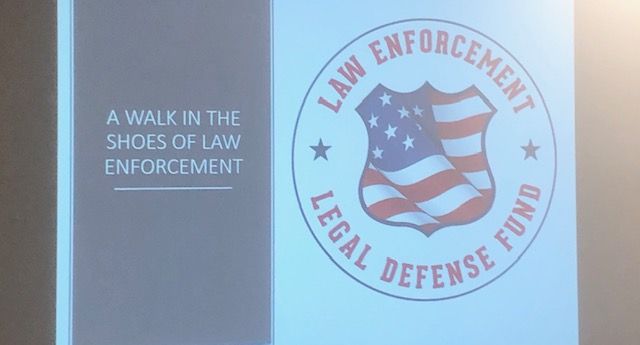A Walk In the Shoes of Law Enforcement with Lewes Police

Local media, residents, and elected officials got a rare and unprecedented chance to take a walk in the shoes of law enforcement Wednesday in Lewes.
The Law Enforcement Legal Defense Fund partnered with the Lewes Police Department and granted WGMD’s Rob Petree the opportunity to take part in a State of the Art Use of Force Simulator.
The simulator produced scenarios that members of law enforcement face every single day – showing how time, perception, and decision making are critical when it comes to policing.
In the first simulation, police received a call for a disorderly suspect. Upon arrival, officers found the man walking down the street. His behavior was aggressive, cussing at police. As he reached into his pocket, those participating in the simulation were quick to reach for their firearms; however, the suspect was only grabbing his cell phone.
The second simulation differed vastly. Police received a call for a domestic dispute between two brothers. Upon arrival, officers found them fist fighting in the front yard of a home. After one of the brothers went inside and grabbed a knife, participants were forced to shoot the suspect as he lunged at them.
Lewes Police Chief Tom Spell felt it was important to provide a greater perspective into what law enforcement face on a daily basis, especially for those with influence such as local community leaders, elected officials, and the media.
“We thought it was really important for our elected leaders, community leaders, and the local media to get a chance to kind of walk in the shoes of a police officer on a variety of different calls,” Chief Spell explained. “Some are deadly force, some are not deadly force, and just get a sense of what that decision making process and stress is like.”
Glen Shaffer, a local retail store manager, was invited to attend and participated in two simulations. He said the job of law enforcement isn’t easy and that there’s more than meets the eye when it comes to how law enforcement are typically portrayed in the mainstream media.
“I think they got a tough job,” Shaffer said. “They do the best they can. Also, the media sometimes portrays them totally different. I think what we have to do is realize that there’s more to the story than what we see on tv. There’s a lot of facts, and things that go on, and we don’t a clue what went on prior to what we see on tv.”


